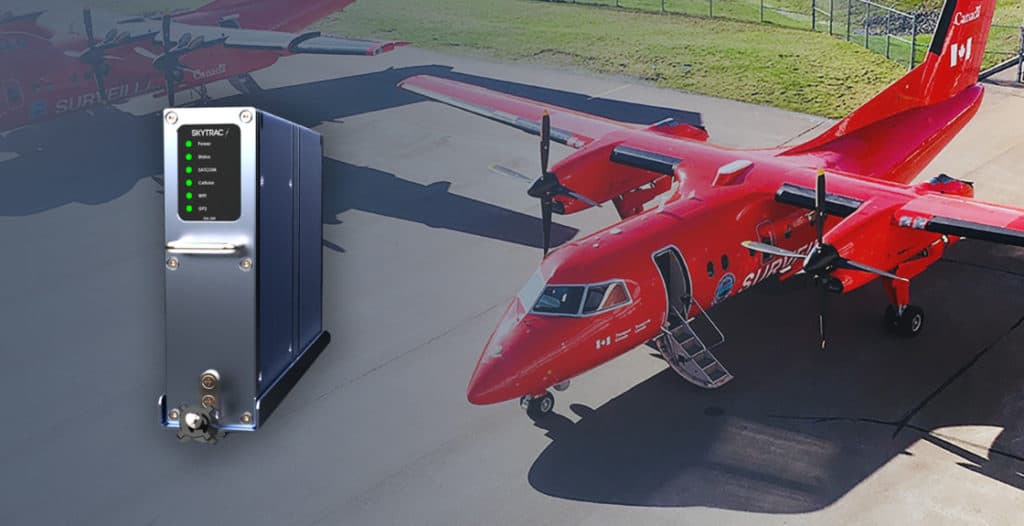

SKYTRAC Systems has teamed up with TerraSense Analytics to develop a new solution for Transport Canada’s National Aerial Surveillance Program (NASP) for Maritime and Arctic Intelligence, Surveillance, and Reconnaissance (ISR). SKYTRAC’s SDL-350 Satcom terminal will be used initially to provide Transport Canada’s Dash-7 and Dash-8 aircraft with Iridium Certus connectivity, with the solution expected to be extended to UAVs (unmanned aerial vehicles) in the future.
Enabling up to 704 Kbps of bandwidth, Iridium Certus connectivity will provide the aircraft with the capability to transmit live video, EO/IR imaging and more directly to the ground in real-time. The Iridium Certus satellite service operates on a Low Earth Orbit (LEO) constellation and offers a much lower size, weight, and power (SWaP) than many other solutions.
TerraSense will provide its MIST technology, which seamlessly fuses, processes, and analyzes camera and sensor data with minimal latency. The system will be hosted on the SKYTRAC SDL-350 and will process electro-optical (EO), infrared (IR), ultraviolet (UV), and side looking airborne radar (SLAR) in real time, providing the operator with live tracking and alerting. MIST also enables analysts to rapidly search and retrieve video and metadata from multiple aerial platforms for post mission analysis.
The combined target detection and tracking system is capable of autonomously identifying a diverse range of intelligence requirements, including fishing and cargo vessels, naval traffic, threats to border security, and search and rescue. The MIST platform mitigates human factors such as fatigue, training, distraction and bias, and also increases the persistence of surveillance without compromising the health of aircrews.
Jan van der Heul, Vice President of Sales at SKYTRAC, commented: “We have partners in multiple segments of aviation which rely on onboard cameras and sensors for intelligence, surveillance, and reconnaissance applications. While studying their various use-cases, it became clear to us that artificial intelligence combined with live video could enhance their operation. We see AI as a core technology heading into the future, and we’re excited to roll out these new capabilities in partnership with TerraSense.”
Jozsef Hamari, TerraSense’s Chief Technology Officer, said: “We set out to create a truly usable artificial intelligence system, one that can withstand the rigors of real-life operations and the demands of highly-trained operators without the learning curves found in legacy systems.”







Related Posts
New Drone Fires Thales Missile in Unmanned Air Combat Milestone
UAS Startup Accelerator Awards 3M in Funding
US Navy Orders Unmanned Tactical Resupply Aircraft